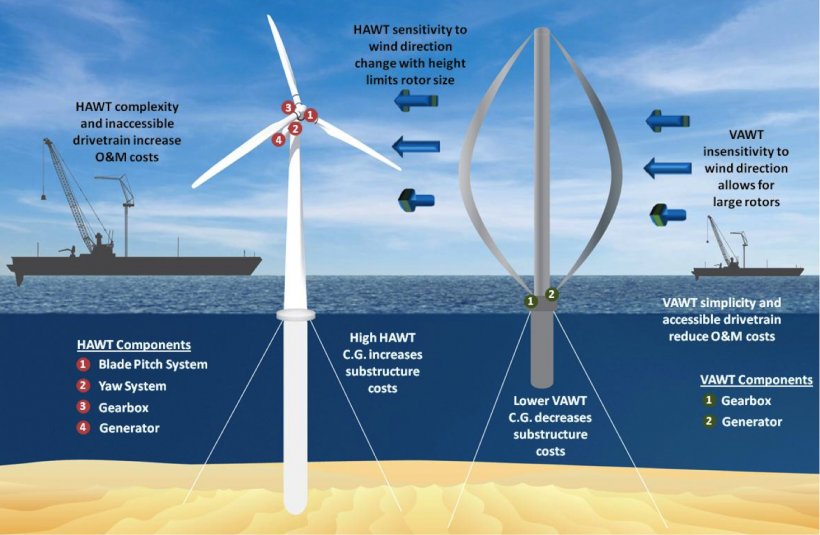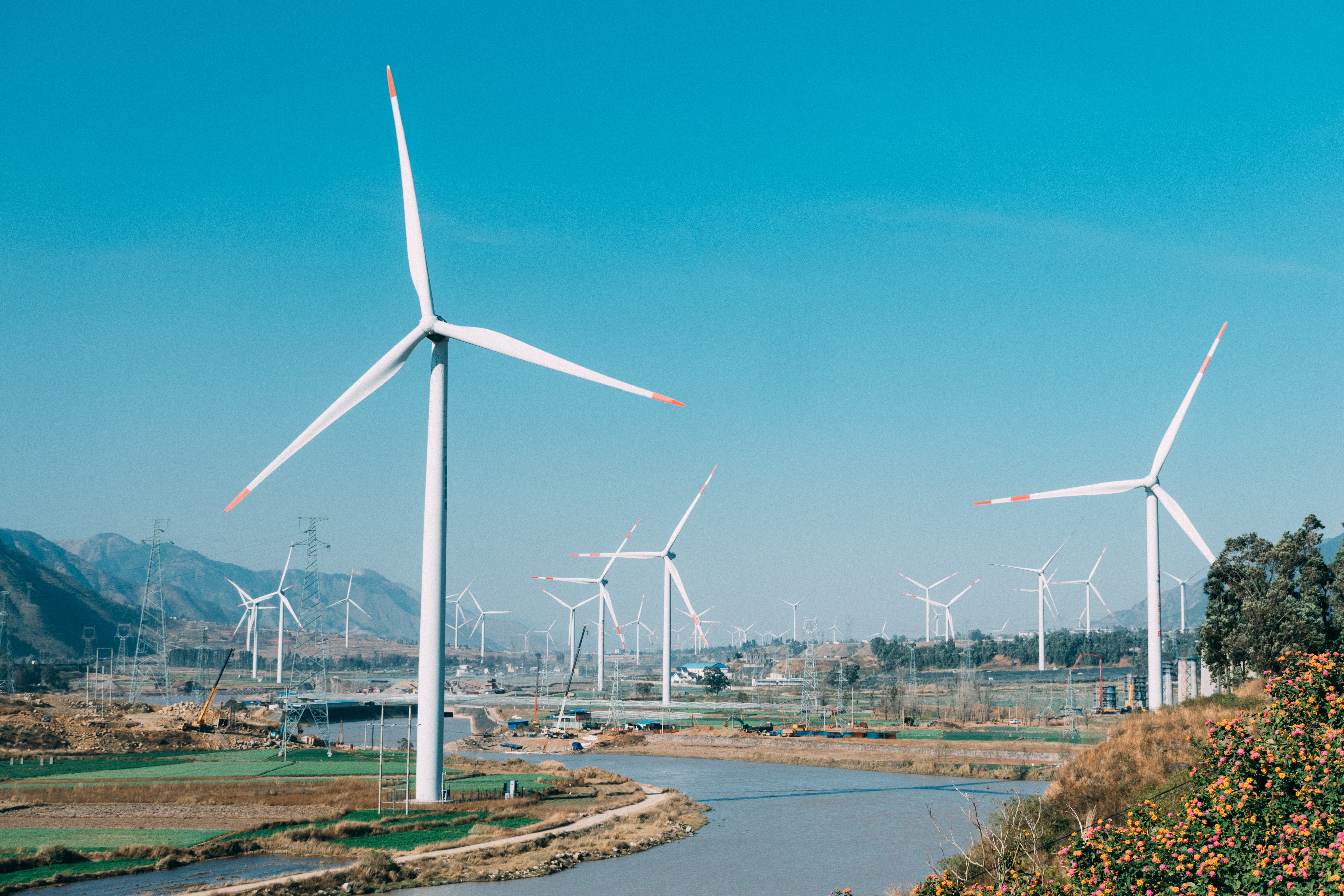Enjoy the Multiple Benefits Brought by Wind Turbines
You should have the confidence that with only the wind and a small-scale wind turbine you can power the whole house you live in. Wind turbines capture the power of the wind and convert it to electricity. Placed in an exposed site, a typical wind turbine system could easily generate more power than your lights and electrical appliances need. So just enjoy the multiple benefits brought by wind turbines.
What are Wind Turbines?
A wind turbine is a machine that converts kinetic energy gotten from the wind into electrical energy. At the core of the mechanics in wind turbines are permanent magnets, a special type of magnet with strong permanent magnetic properties. Wind Turbine devices are highly efficient, generating enough energy to power even farms. They are a common source of renewable and sustainable energy. They decrease the dependence a lot of countries have on fossil fuels.
Brief History
Wind turbines are not a novel invention. The earliest record of a device similar to a wind turbine is The Windwheel of Hero of Alexandria. This device was in use by 10 AD-70 CE. The first wind turbine was used to light a holiday home. It was installed by a Scotsman, James Blyth, in July 1987. A few months after this, an American inventor named Charles. F. Bush developed the first automatic wind turbine with the help of Jacob. S. Cribbs and Brinsley Coleberd. By 2016, wind turbines had become so popular that Denmark generated about 38% of its electricity from wind. In recent years, more developments have been made in wind turbine technology to produce more high-power wind turbines. Global warming concerns have led to activists championing the use of wind turbines as a means of generating electricity. It is expected that by 2030, 20% of the world's electricity would be generated by wind turbines.
How do Wind Turbines Function?
It sounds almost magical that something as commonplace as the wind can be used to generate electricity. However, it's no magic. There's a science behind how it all happens. Let's take a look at how kinetic energy from the wind can be used to generate electricity. For a wind turbine to work, wind rotates the blades of the turbine. These blades are connected to a shaft that turns an electrical generator as the blades turn. The electrical generator then converts the kinetic energy transmitted to it into electricity. The operation of wind turbine generators is based on the Principle of Electromagnetism and it typically follows the design of the first electromagnetic designed by Michael Faraday in 1831. When an electric conductor is rotated within a magnetic field, it will generate electricity. As the blades of the turbines rotate in the direction of the wind, electromagnetic induction occurs within the magnetic field of the permanent magnet in the turbines to produce electricity. A generator connected to the shaft of the wind turbine converts the motion of the blades to electricity.
Further Reading: Working Principle of a Wind Turbine and How to Make One
Types of Wind Turbines
There are two main types of wind turbines based on the axis of rotation.
 Illustration by Sandia National Laboratories. Source: energy.gov
Illustration by Sandia National Laboratories. Source: energy.gov
Horizontal Axis Wind Turbines (HAWT)
Horizontal-axis wind turbines are older and more popular than the second type of wind turbine. They look like giant standing fans. This type of wind turbine must be aligned with the direction of the wind to function. To achieve alignment with the wind, they use a wind vane or a wind sensor. Horizontal-axis wind turbines typically have three blades. The taller a turbine is and the longer its blades, the more electricity it can generate. HAWTs can be upwind or downwind. They are most often upwind. In upwind horizontal axis wind turbines, the wind collides with the rotor blades before it collides with the mast. However, in downwind horizontal axis wind turbines, the opposite is the case.
Vertical Axis Wind Turbines (VAWT)
Vertical-axis wind turbines are not as sensitive to wind direction as horizontal-axis wind turbines are. However, they are less commonly used because they are less efficient. They are ideal for places where the wind direction is erratic. VAWTs exist in different forms. They exist as savonius turbines, darrieus turbines, gromill turbines, and cyclo turbines.
Benefits of Wind Turbines

Reduced Costs
- •Low Operation & Installation Fee: Wind turbines provide an economical source of energy. The cost of operation and installation is low compared to that of other devices used to generate electricity.
- •Savings on Electricity Bills: The wind is free. You do not need to pay for fuel to generate your electricity, and the only cost you would need to pay is the material and installation fee.
- •Returning on Investment: The Feed-in-Tariffs law allows you to get paid for your generated electricity even if you use it. You can earn money from the electricity generated by your turbine. You can also receive payments for the electricity you don't use and export it to the local grid.
Renewable Source of Energy
It is hard to imagine a scenario where wind ceases to exist. Hence, wind energy provided by wind turbines is renewable and sustainable energy. It does not require the depletion of natural resources. Wind contributes the largest percentage of renewable energy in the United States.
Reduced Pollution
The wind is a clean source of energy. There is little risk of environmental pollution and carbon emission when you use wind turbines to generate electricity. Wind energy does not pose nearly as many environmental hazards as fossil fuels which threaten our climate. Increased use of wind energy could prevent global warming.
Simple Maintenance
Wind turbines are easy to maintain. They are also durable and rarely need repairs. They can run for as long as two years without needing any touch-ups. Also, they can last for as long as twenty years without losing their efficiency.
Versatility
The wind is available everywhere in the world. Hence, wind turbines can be used in most places, including in remote and rural areas. It can be used in isolated places with no connection to the electricity grid.
Job Creation
The wind energy industry creates jobs for over 120 000 people in the United States. A report by the U.S Bureau of Labor Statistics showed wind turbine servicing technicians as the second fastest-growing job in the United States.
Conclusion
Wind turbines have proven to be very important energy-generating devices. They are a source of renewable energy, simple to maintain, economical, and versatile. More countries are adopting wind turbines as an affordable and sustainable means of providing affordable electricity. Thank you for reading and we hope it can help you to have a better understanding of wind turbines. If you want to learn more, we would like to advise you to Stanford Magnets for more information.














